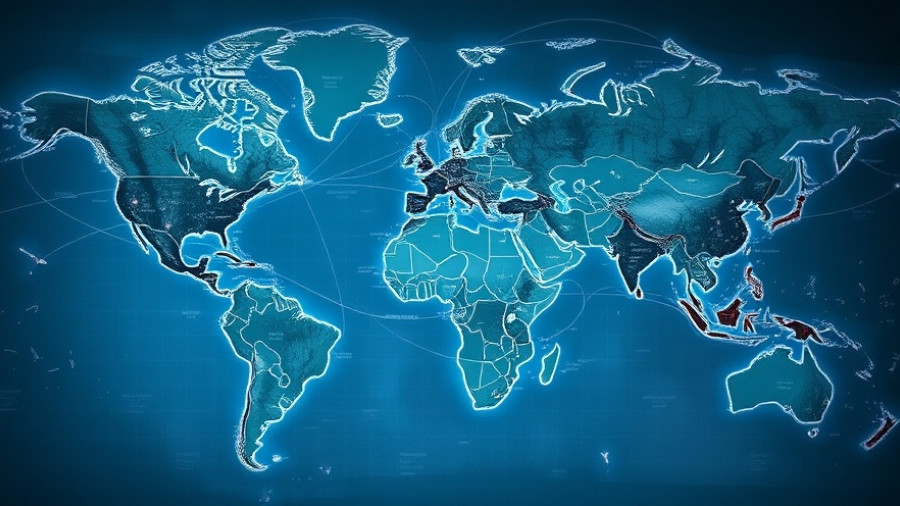
The Unforeseen Impact of Tariffs on Global Commerce
Did you know that global tariff changes can increase the price of household goods by up to 30% overnight? From smartphones to automobiles, the connection between tariffs and international trade sends powerful ripples through the world economy—impacting businesses, consumers, and supply chains everywhere. This guide uncovers what’s at stake and why business executives must pay attention to how tariffs are shaping the market right now.
Understanding Tariffs and Their Economic Ramifications
At its core, a tariff is a government-imposed tax on imported goods, structured to protect domestic industries from foreign competition. These tariffs play a crucial role in determining the cost of goods, which directly affects the bottom line for businesses and consumers alike. When tariffs increase, the immediate implication is a rise in consumer prices.
The interplay between customs duties, reciprocal tariffs, and regional agreements transforms not only what we trade but also how we conduct business and our overall economic landscape. For instance, tariffs can lead to a considerable uptick in operating costs. Experts estimate that tariffs imposed during trade wars, such as those enforced under various administrations, will collectively raise $2.4 trillion in revenue over the next decade while simultaneously reducing U.S. GDP by up to 0.8%.
The Price of Goods and Job Markets
Tariffs force domestic businesses to navigate a convoluted landscape where higher costs can lead to increased prices for consumers, affecting everything from groceries to electronics. Currently, the average American household could see a tax increase of about $1,300 in 2025 due to imposed tariffs, according to economic projections.
Moreover, the job market is intimately tied to these dynamics. As imports become more expensive, companies are faced with mounting pressure to increase wages to attract talent while simultaneously cutting costs elsewhere. If companies pass these additional costs onto consumers, they face a risk of decreased sales, ultimately leading to job cuts.
Adaptation Strategies for Business Executives
In this unique global landscape, being proactive is key. Executives need to implement strategies that includes:
- Diversifying Supply Sources: Explore alternative sourcing strategies by finding reliable suppliers outside of traditional markets such as China. Consider near-shoring options to reduce transportation costs.
- Improving Profit Margins: To adapt to fluctuating tariffs, businesses should focus on operational efficiencies. Review business cost reduction strategies to ensure they remain competitive.
- Building a Resilient Supply Chain: Assess the supply chain thoroughly and implement steps to mitigate disruptions caused by tariff fluctuations and geopolitical risks.
The Interconnectedness of Global Trade and Economic Policies
The rise of tariffs only amplifies the need for businesses to better understand the broader implications of trade policies. as seen in recent historical contexts, such as the U.S.-China trade tensions, the introduction of tariffs frequently invites retaliatory measures that further complicate global trade relations and economic stability.
Furthermore, as the global stage shifts, businesses need to prioritize understanding the evolving economic policies. Tariff policies not only affect international trade agreements but also influence domestic manufacturing challenges, inflation rates, and consumer behavior. This interdependence underscores the importance for leaders to stay informed and engaged in discussions surrounding international trade policies.
Looking Forward: Tariff Implications and Future Business Strategies
Executives should keep an eye on emerging trends to better prepare their organizations for potential trade disruptions. Monitoring government decisions on tariffs can be a critical IOU—forecasting the cost of goods sold and understanding how tariffs affect business valuation will allow organizations to navigate fluctuations more successfully.
By recognizing and understanding the implications of tariffs, businesses can strategically prepare to weather the economic storms of the future while maximizing their operational efficiency.
In conclusion, it’s essential for business executives to acknowledge the profound impact tariffs have on their operations. By implementing proactive strategies and staying informed, they can turn potential challenges into opportunities for long-term growth.
Ready to future-proof your business and stay ahead of market trends? Consider integrating comprehensive tariff impact analysis into your strategic planning processes today, ensuring you’re well-prepared for any economic landscape ahead.
 Add Row
Add Row  Add Element
Add Element 



Write A Comment